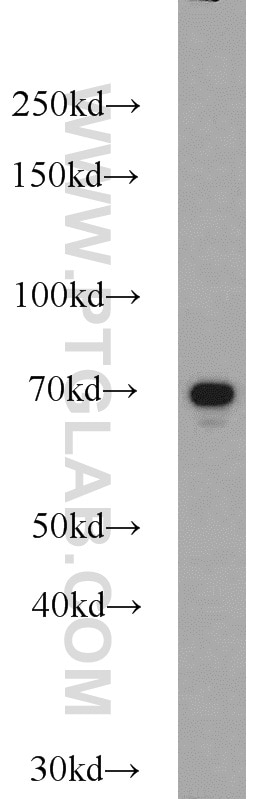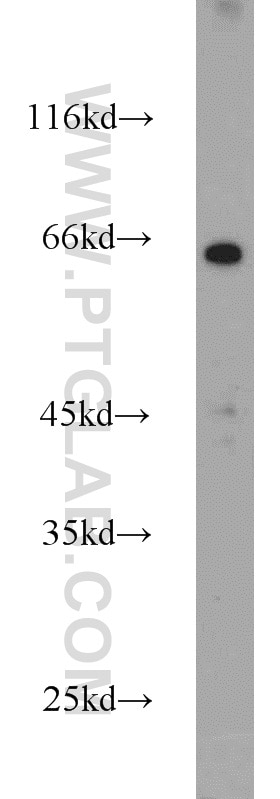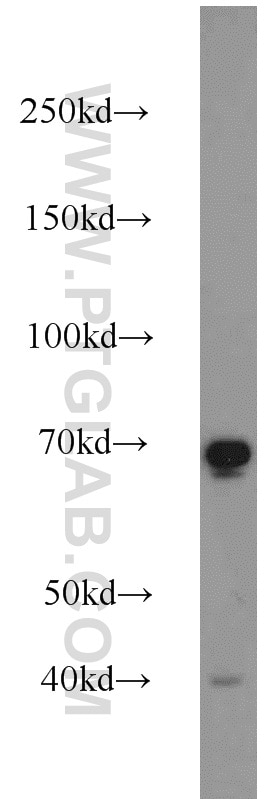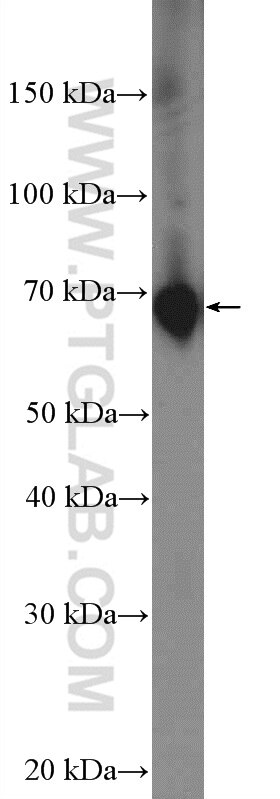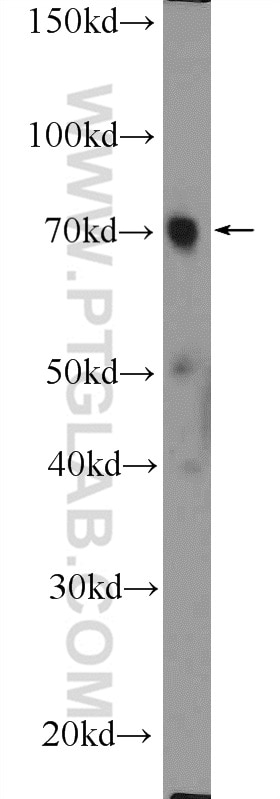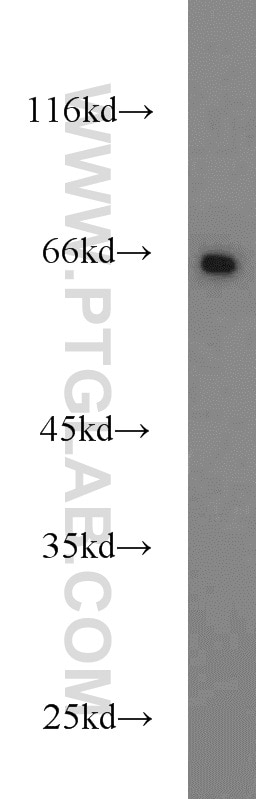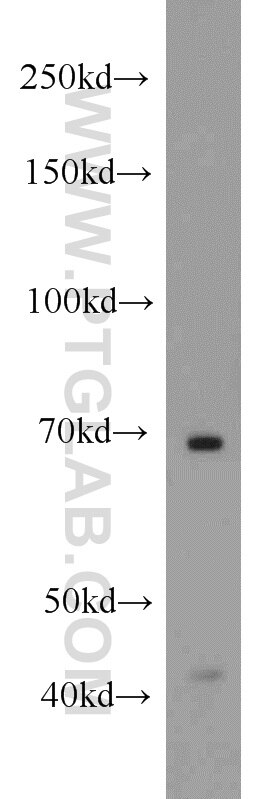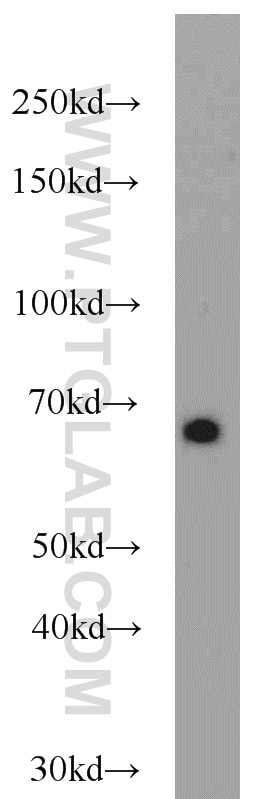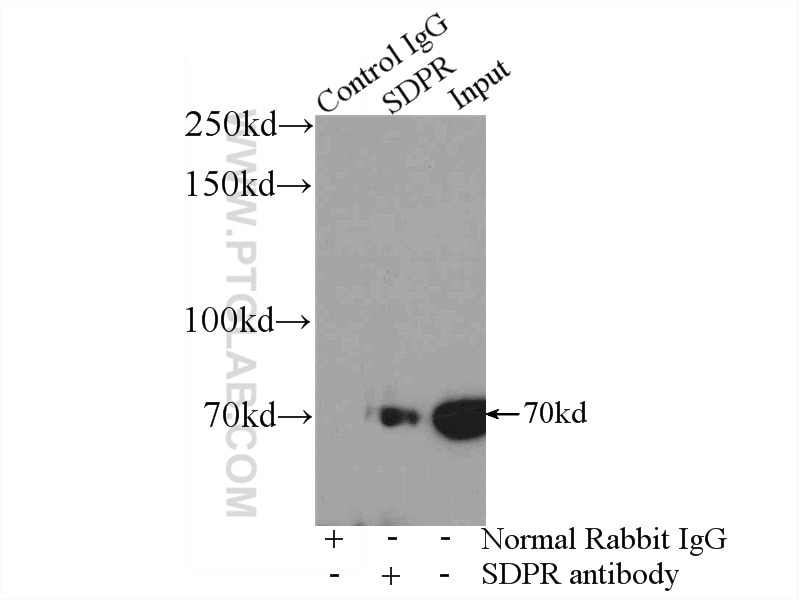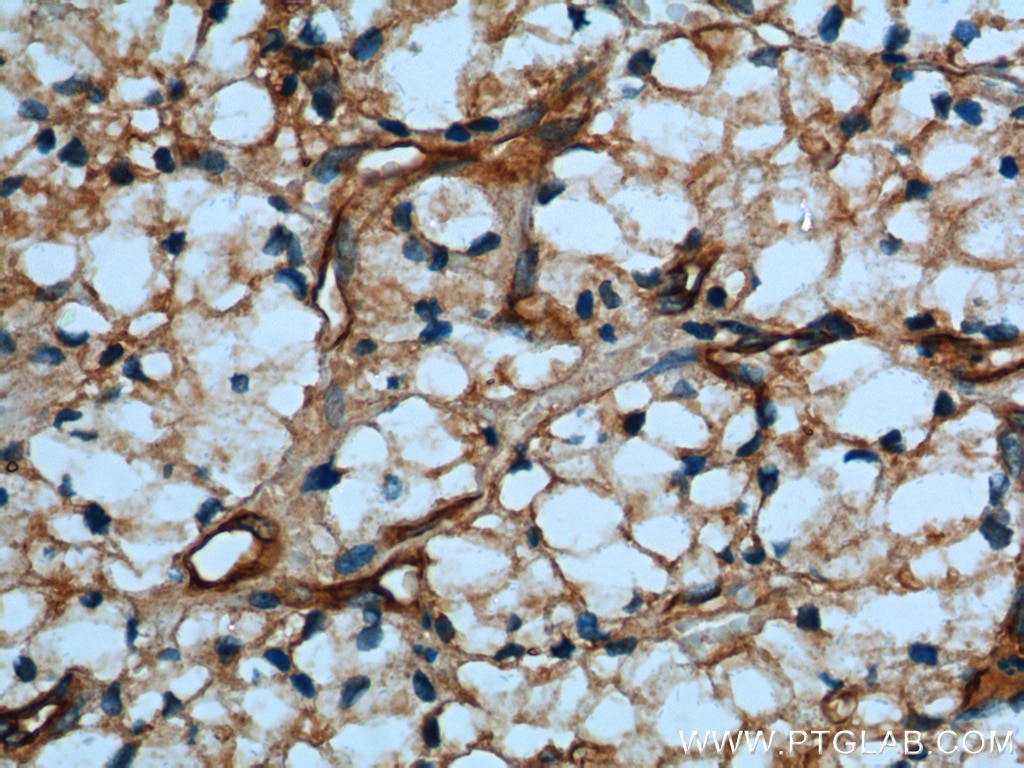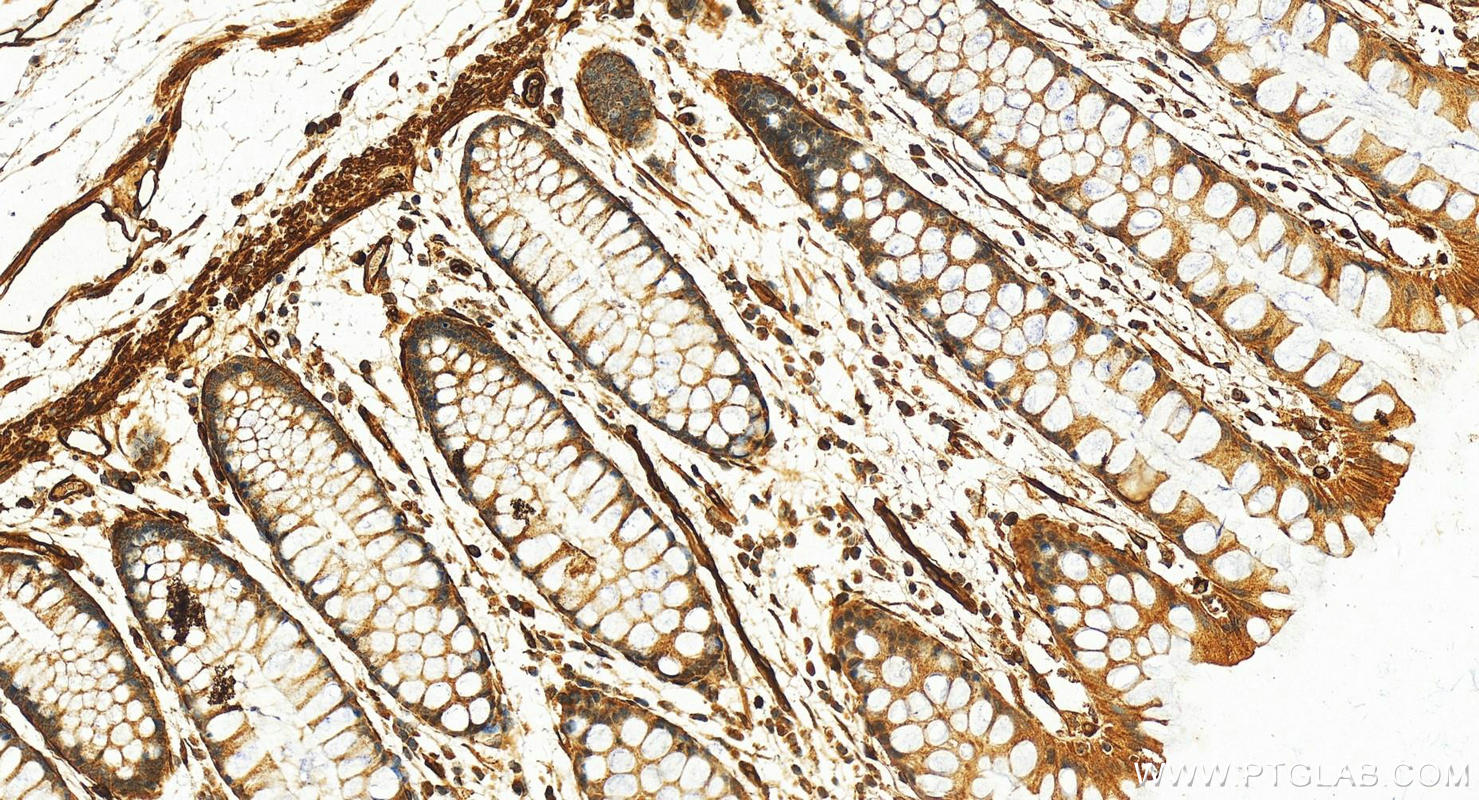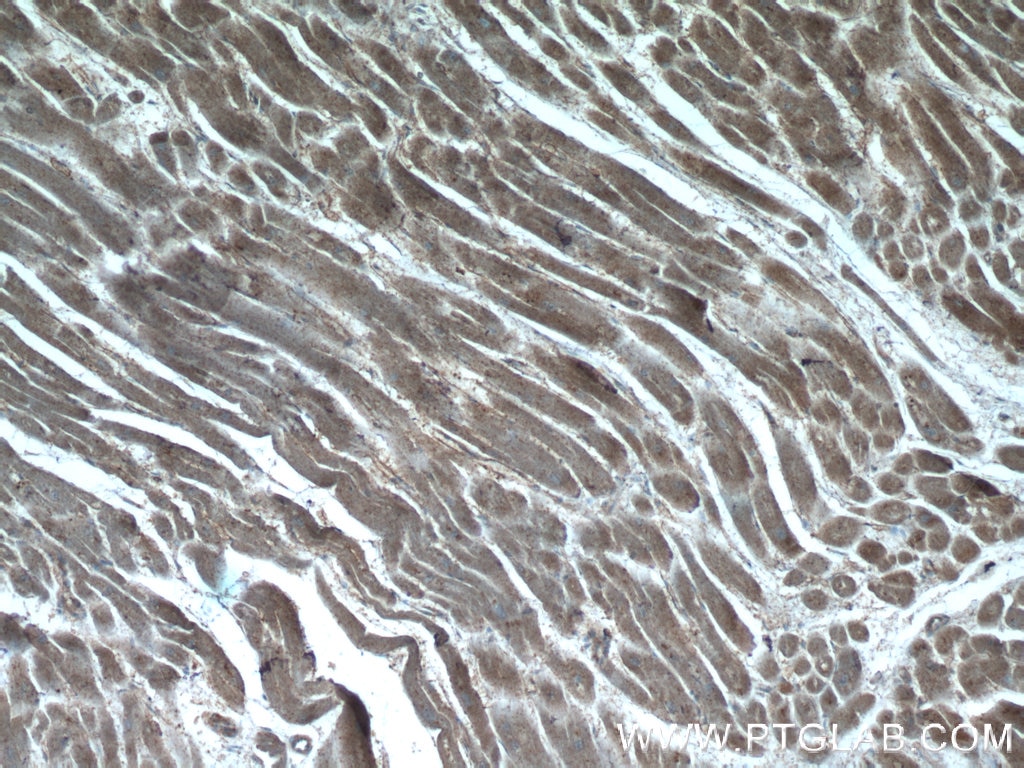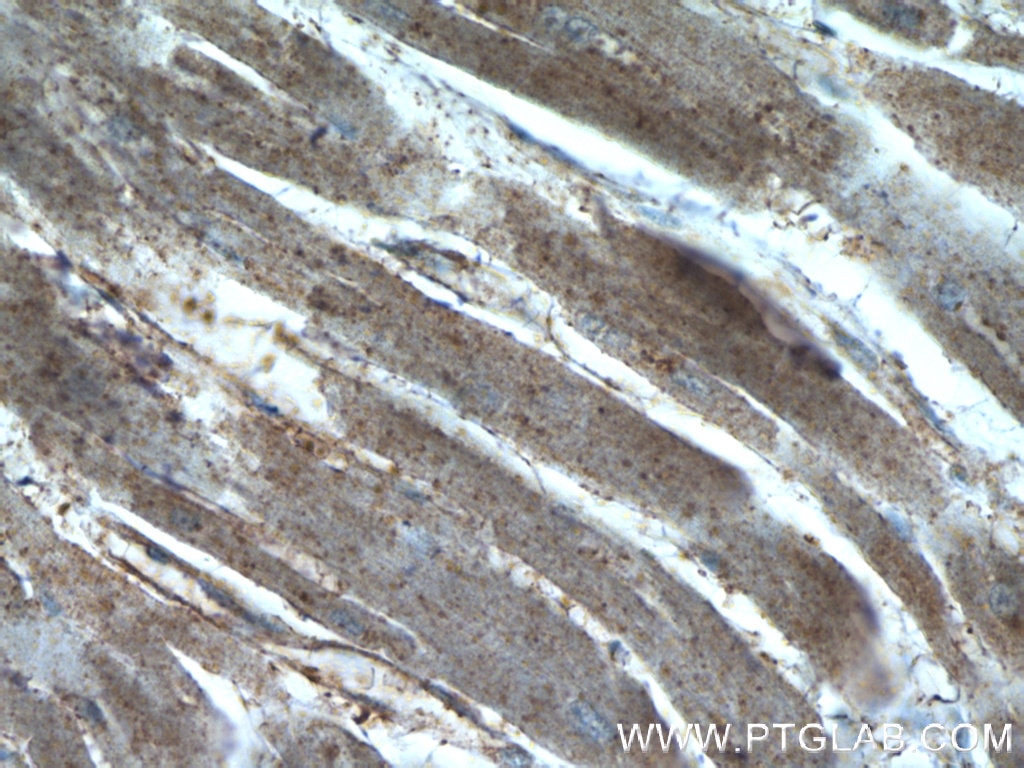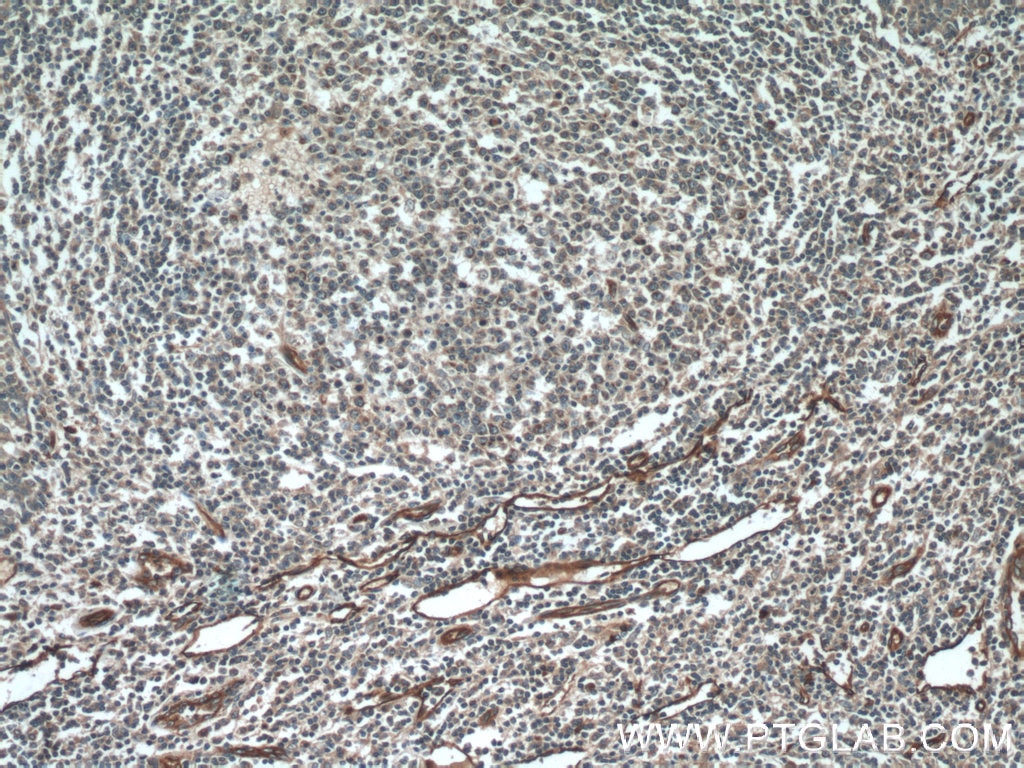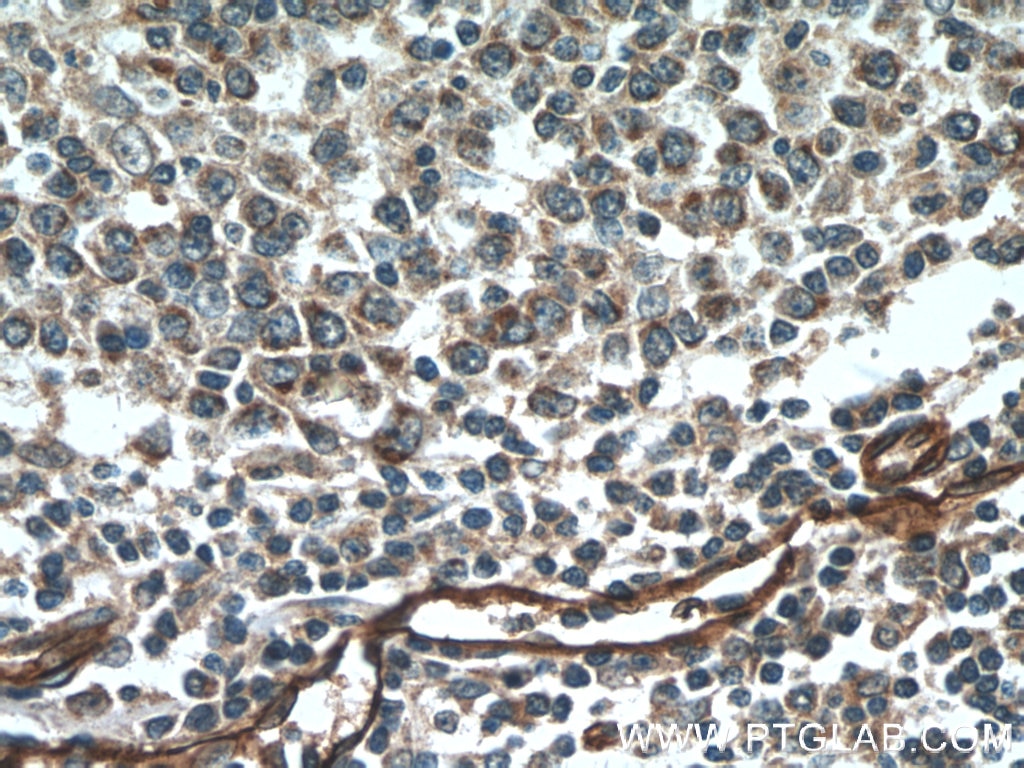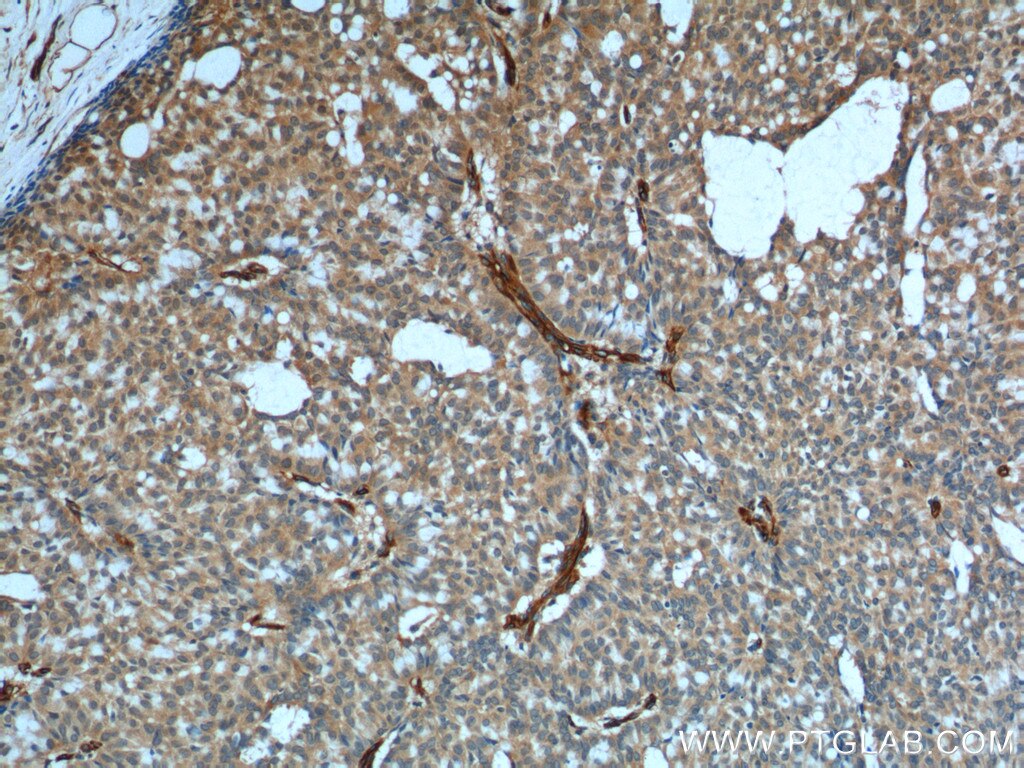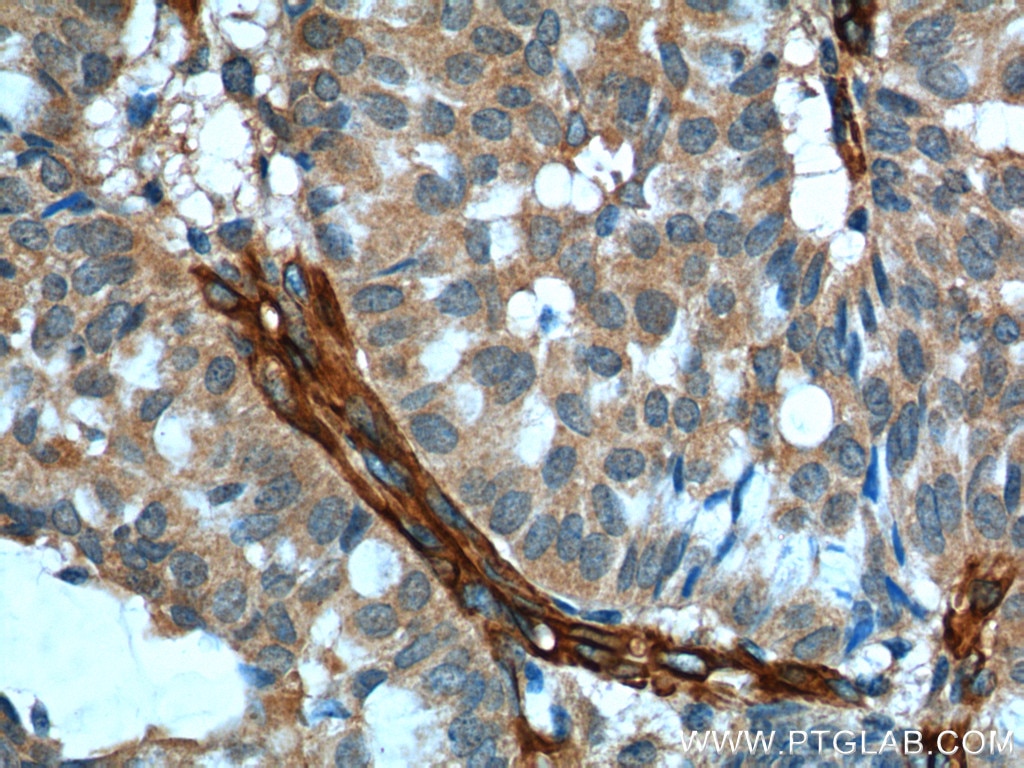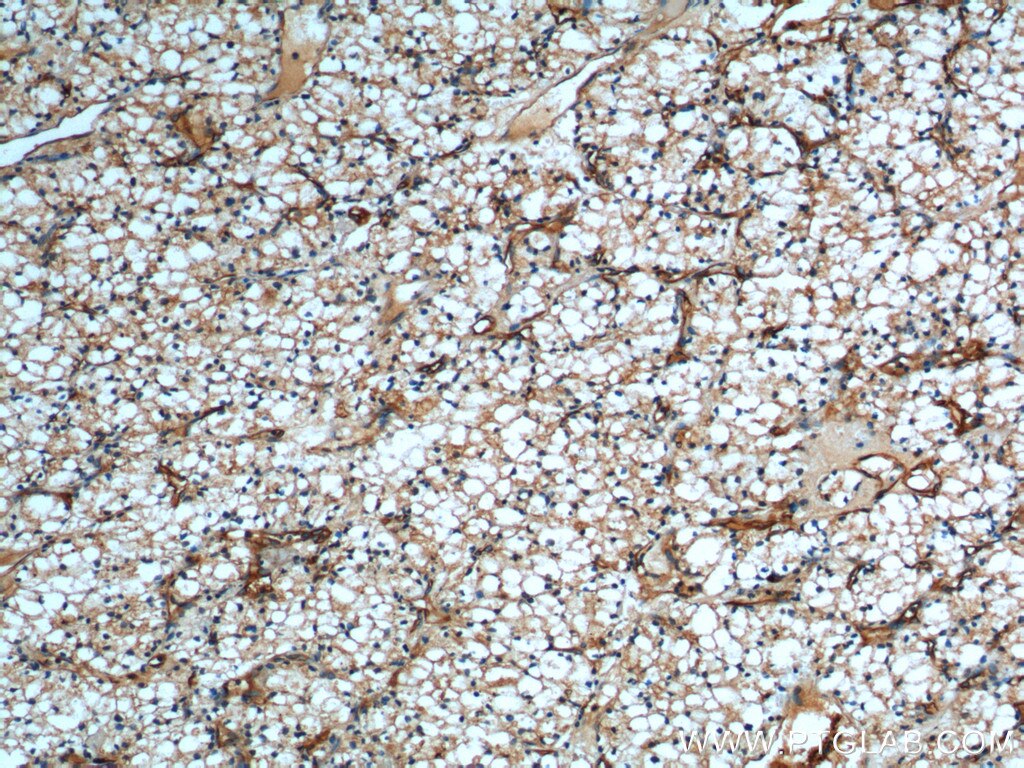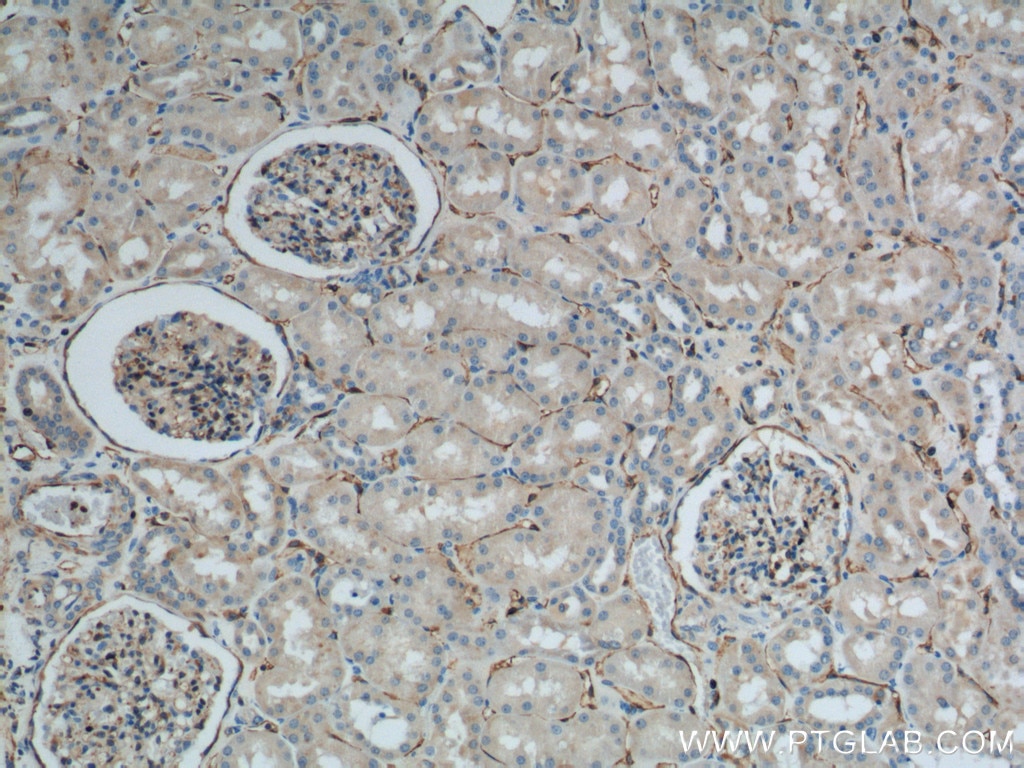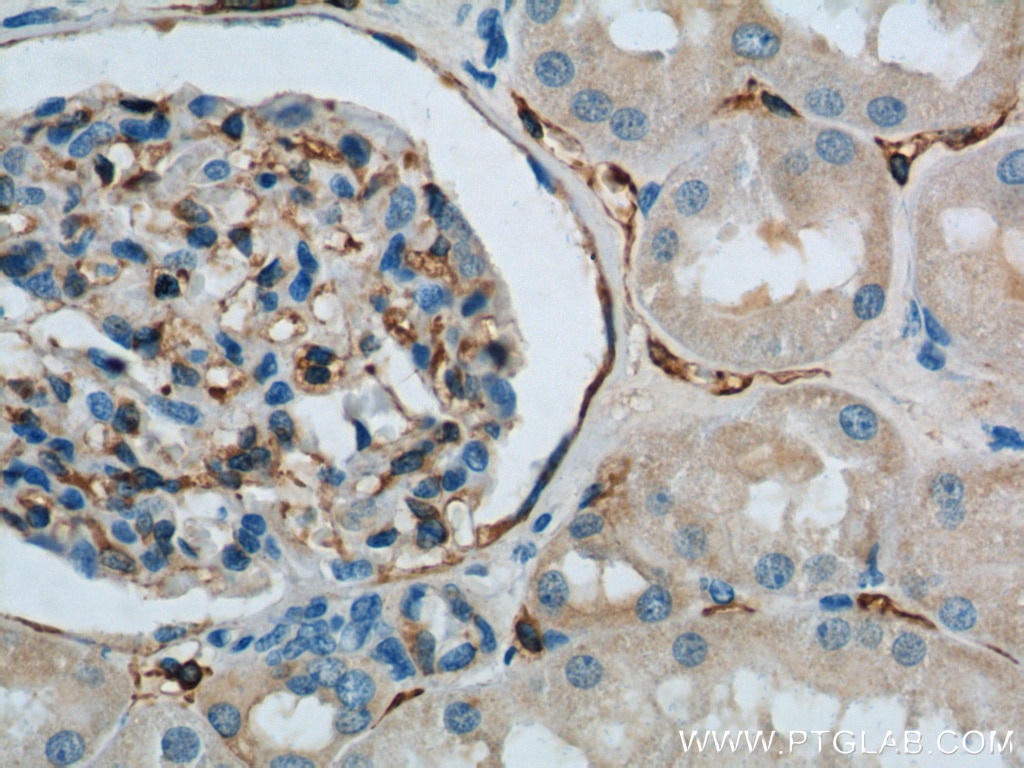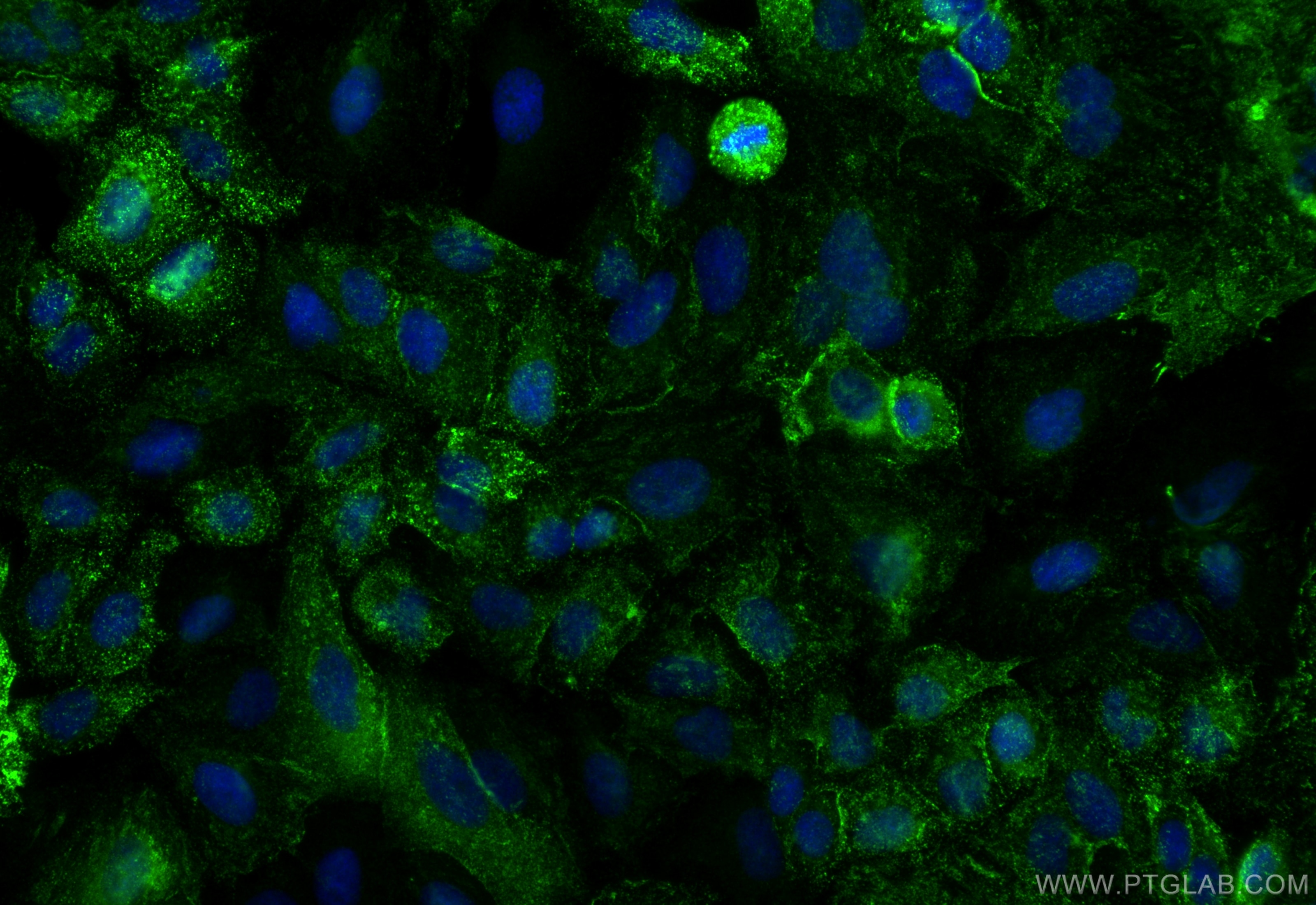Tested Applications
| Positive WB detected in | A549 cells, mouse brain tissue, mouse liver tissue, COLO 320 cells, mouse placenta tissue, rat brain tissue, mouse heart tissue |
| Positive IP detected in | mouse heart tissue |
| Positive IHC detected in | human renal cell carcinoma tissue, human breast hyperplasia tissue, human heart tissue, human kidney tissue, human normal colon, human tonsillitis tissue Note: suggested antigen retrieval with TE buffer pH 9.0; (*) Alternatively, antigen retrieval may be performed with citrate buffer pH 6.0 |
| Positive IF/ICC detected in | A549 cells |
Recommended dilution
| Application | Dilution |
|---|---|
| Western Blot (WB) | WB : 1:500-1:1000 |
| Immunoprecipitation (IP) | IP : 0.5-4.0 ug for 1.0-3.0 mg of total protein lysate |
| Immunohistochemistry (IHC) | IHC : 1:50-1:500 |
| Immunofluorescence (IF)/ICC | IF/ICC : 1:200-1:800 |
| It is recommended that this reagent should be titrated in each testing system to obtain optimal results. | |
| Sample-dependent, Check data in validation data gallery. | |
Published Applications
| KD/KO | See 3 publications below |
| WB | See 14 publications below |
| IHC | See 5 publications below |
| IF | See 5 publications below |
| IP | See 1 publications below |
| CoIP | See 1 publications below |
Product Information
12339-1-AP targets SDPR in WB, IHC, IF/ICC, IP, CoIP, ELISA applications and shows reactivity with human, mouse, rat samples.
| Tested Reactivity | human, mouse, rat |
| Cited Reactivity | human, mouse, rat |
| Host / Isotype | Rabbit / IgG |
| Class | Polyclonal |
| Type | Antibody |
| Immunogen |
CatNo: Ag2990 Product name: Recombinant human SDPR protein Source: e coli.-derived, PGEX-4T Tag: GST Domain: 73-425 aa of BC016475 Sequence: QENQHKMEQRQISLEGSVKGIQNDLTKLSKYQASTSNTVSKLLEKSRKVSAHTRAVKERMDRQCAQVKRLENNHAQLLRRNHFKVLIFQEENEIPASVFVKQPVSGAVEGKEELPDENKSLEETLHTVDLSSDDDLPHDEEALEDSAEEKVEESRAEKIKRSSLKKVDSLKKAFSRQNIEKKMNKLGTKIVSVERREKIKKSLTSNHQKISSGKSSPFKVSPLTFGRKKVREGESHAENETKSEDLPSSEQMPNDQEEESFAEGHSEASLASALVEGEIAEEAAEKATSRGSNSGMDSNIDLTIVEDEEEESVALEQAQKVRYEGSYALTSEEAERSDGDPVQPAVLQVHQTS Predict reactive species |
| Full Name | serum deprivation response (phosphatidylserine binding protein) |
| Calculated Molecular Weight | 425 aa, 47 kDa |
| Observed Molecular Weight | 68-70 kDa |
| GenBank Accession Number | BC016475 |
| Gene Symbol | SDPR |
| Gene ID (NCBI) | 8436 |
| RRID | AB_2183305 |
| Conjugate | Unconjugated |
| Form | Liquid |
| Purification Method | Antigen affinity purification |
| UNIPROT ID | O95810 |
| Storage Buffer | PBS with 0.02% sodium azide and 50% glycerol, pH 7.3. |
| Storage Conditions | Store at -20°C. Stable for one year after shipment. Aliquoting is unnecessary for -20oC storage. 20ul sizes contain 0.1% BSA. |
Background Information
Serum deprivation-response protein(SDRP), a substrate of protein kinase C, is a member of a group of proteins that bind to phosphatidylserine in a clacium-dependent manner. SDPR may participate in the generation or stabilization of membrane curvature. SDPR is highly expressed in heart and lung, and low in brain,kidney, liver, pancreas, placenta and skeletal muscle. This is a rabbit polyclonal anti-SDPR antibody raised against C-terminus of human SDPR. SDRP of molecular masses 115 kDa and 100 kDa were found in neutrophils, monocytes, lymphocytes, platelets and erythrocytes. In platelets, however, the principal SDRP is a cytosolic protein of molecular mass 68 kDa. (PMID: 2390065 )
Protocols
| Product Specific Protocols | |
|---|---|
| IF protocol for SDPR antibody 12339-1-AP | Download protocol |
| IHC protocol for SDPR antibody 12339-1-AP | Download protocol |
| IP protocol for SDPR antibody 12339-1-AP | Download protocol |
| WB protocol for SDPR antibody 12339-1-AP | Download protocol |
| Standard Protocols | |
|---|---|
| Click here to view our Standard Protocols |
Publications
| Species | Application | Title |
|---|---|---|
ACS Nano Engineering Extracellular Vesicles Restore the Impaired Cellular Uptake and Attenuate Intervertebral Disc Degeneration.
| ||
Cardiovasc Res Loss of Cavin-2 destabilizes PTEN and enhances Akt signaling pathway in cardiomyocytes | ||
Dev Cell Cellular heterogeneity of human fallopian tubes in normal and hydrosalpinx disease states identified using scRNA-seq. | ||
Haematologica Dynamin 2 is required for GPVI signaling and platelet hemostatic function in mice. | ||
Mol Metab Requirement of Cavin-2 for the expression and stability of IRβ in adequate adipocyte differentiation. | ||
J Cereb Blood Flow Metab P-glycoprotein traffics from the nucleus to the plasma membrane in rat brain endothelium during inflammatory pain. |

